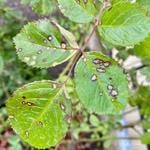
How to Grow Cress Seeds
Grow Guide #2259
Family: Brassicaceae
Binomial name: Lepidium sativum
Life Cycle: Biennial
This 'How to Grow' guide details everything a home gardener needs to know to plant, grow and care for Cress (Lepidium sativum).
Some other plants are known as ‘cress’ but are different species botanically. American Upland cress (Barbarea verna), also known as land cress, is grown in the same way as cress. Watercress (Nasturtium officinale) is a different species botanically and has different growing requirements to cress.
When to Sow Cress Seeds
Cress can be grown year-round in most climates. Avoid planting in extremely hot or cold weather which can affect germination and growth. Use the table below to identify the best time of year to sow cress in your climate.
| JAN | FEB | MAR | APR | MAY | JUN | JUL | AUG | SEP | OCT | NOV | DEC | |
|---|---|---|---|---|---|---|---|---|---|---|---|---|
| Cool | ||||||||||||
| Temperate | ||||||||||||
| Sub-Tropical | ||||||||||||
| Tropical | ||||||||||||
| Arid |
Preparation
Cress plants are best grown in full sun or part shade. Choose a location that will receive at least 3 hours of full sun each day.
Cress plants need a well drained soil enriched with plenty of organic matter. Prepare soil by weeding it thoroughly, digging it over to loosen it and adding aged animal manure or compost. Keep the area free of weeds until planting. Learn more about preparing soil for planting here.
Cress plants can be grown in containers. If possible choose a variety that’s recommended for container growing. Use a good quality potting mix and make sure your container is large enough for mature plants; a minimum of 10 litres is recommended for cress. During the growing season, keep in mind that container grown plants may need additional fertiliser to encourage healthy growth.
How to Sow Cress Seeds
Cress seeds do not require any treatment (eg soaking, stratification) before sowing.
Cress seeds grow best when they are sown directly into the garden.
- Sow seeds directly in the garden 4mm deep and 5-15cm apart, with rows 15cm apart.
- Keep soil moist but never wet or dry.
- Seeds should germinate in around 6-14 days at a soil temperature of 7-15°C.
- Young seedlings will need protection from pests, pets and weather until they are established.
Cress is a cool season crop that will bolt in very hot weather. Do not transplant seedlings or sow seeds outside in very warm temperatures.
Tip: Cress seeds can also be sown in the less formal ‘scatter seed’ method. Simply roughen the soil, scatter seeds evenly over the surface, then smooth the soil over lightly to cover the seeds.
How to Grow Cress
Cress plants need regular watering during the growing season. Do not let soil dry out; keep soil evenly moist but not waterlogged. Water deeply in the early morning or late afternoon. Avoid watering the leaves of plants to avoid fungal diseases. Learn more about watering here.
If soil was well prepared no extra fertiliser should be necessary. In poor soil or to give your plants an extra boost, application of a high-nitrogen fertiliser or one formulated for leafy greens or herbs can be beneficial:
- Apply slow release fertiliser at the recommended rate when transplanting or when seedlings are 5-10cm tall.
- Apply liquid fertiliser at the recommended rate and frequency during the growing season.
Optional: To give plants room to grow, thin seedlings when they are large enough to handle. Pull out any weak or small seedlings so plants are spaced about 5-15cm apart.
How to Harvest Cress
Cress should be ready to harvest in approximately 15-50 days.
Cress is ready to harvest when the leaves are large enough to eat. Cress can be harvested as a 'cut and come again' crop by pinching or cutting a few outer leaves as needed, leaving some on the plant for future growth. Cress can be stored short term in a perforated plastic bag in the fridge.
Common Problems when Growing Cress
Like all plants, cress is susceptible to some pests, diseases and other problems. Below is a list of the most common problems gardeners encounter when growing cress plants:
 Bacterial leaf spot is a disease that causes irregularly shaped brown spots on all above-ground parts of a plant. The spots at first appear to be wet but become dry and scab-like over time. Leaves and flowers can fall prematurely. Water plants at soil level (not on the leaves), dispose of fallen leaves and fruit and practice crop rotation.
Bacterial leaf spot is a disease that causes irregularly shaped brown spots on all above-ground parts of a plant. The spots at first appear to be wet but become dry and scab-like over time. Leaves and flowers can fall prematurely. Water plants at soil level (not on the leaves), dispose of fallen leaves and fruit and practice crop rotation. Bolting is when a plant prematurely flowers and goes to seed. Bolting can be caused by a period of extreme weather. Avoid sowing seed until after the danger of frosts has passed or in very hot weather. Water plants regularly and deeply in hot weather to prevent them suffering heat stress.
Bolting is when a plant prematurely flowers and goes to seed. Bolting can be caused by a period of extreme weather. Avoid sowing seed until after the danger of frosts has passed or in very hot weather. Water plants regularly and deeply in hot weather to prevent them suffering heat stress.


.png)





